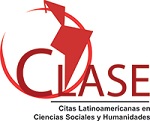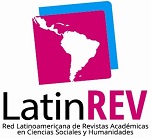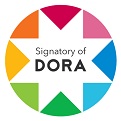The Aesthetic Imaginary in the Virtual Comproducción of Ecofábulas
DOI:
https://doi.org/10.26490/uncp.horizonteciencia.2021.21.900Keywords:
Imaginary, virtual comproducción, eco-fablesAbstract
In this article, the transcendence of the aesthetic imaginary as a support for the comproducción of eco-fables is made visible. The aesthetic imaginary constitutes the creative source from which the figurative forms for literary creation emerge, in this case, the virtual comproducción of eco-fables. The virtual comproducción of eco-fables constitutes an intertextual connection between a fable (previous production) with another that necessarily emerges at the moment of understanding what is read, activities that are carried out in virtual spaces. The research was applied at an experimental level with a pre-experimental design. The method of modeling and logical history were applied. The instruments used were the observation sheet for the aesthetic imaginary and the content analysis sheet for the virtual comproducción of eco-fables. The study group was made up of 35 students from the Professional Career of Languages, Literature and Communication. It concludes that the level of efficacy of the aesthetic imaginary in the comproducción of eco-fables is high, as evidenced by the publication of the eco-fables comproducidas and the estimation of the p-value: 0,00 = 0% with a significance level of α = 0,05 . In this way, the tradition that what is read remains in what is understood is abandoned; but rather the obligation to materialize the underlying productive act in all reading comprehension.
Downloads
References
Ariste, Estela & Zapana, S. (2011) La ecofábula como estrategia para el desarrollo de la habilidad comunicativa corporal en la institución educativa N° 30218 - Madre Teresa de Calcuta - El Tambo: Universidad Nacional del Centro del Perú
Cerrón Rojas, W., & Rojas López, B. (2015). Habilidades investigativas y formación de valores ecopedagógicos en estudiantes de Educación de la Universidad Nacional del Cenro del Perú . Huancayo: UNCP.
Cerrón Rojas, W., & Rojas López, B. (2016). Habilidades investigativas y formación de valores ecopedagógicos en estudiantes de Educación de la Universidad Nacional del Cenro del Perú. Huancayo: UNCP.
Cerrón Rojas, Waldemar ; Rojas López, Bertha. (2016). Aulas virtuales y habilidades investigativas en estudiantes de Educación de la Universidad Nacional del Centro del Perú. Huancayo - Perú: UNCP.
Cerrón y López . (2015). Habilidades investigativas y formación de valores pedagógicos ambientales. Huancayo : UNCP.
Hernández Moredo, L. (2020). El devenir de las ideas estéticas en el siglo XIX cubano. Boletín de Estética, 50, 57-92. https://doi.org/10.36446/be.2020.50.111
Montes de Oca, H. & Moscoso, E. (2015). Las ecofábulas en la resolución de problemas matemáticos en estudiantes de segundo grado. Lima: Repositorio de la Universidad San Ignacio de Loyola. http://repositorio.usil.edu.pe/handle/USIL/2204
Maccioni, F. (2016). On the threshold of the amphibious voices: the acuatic imaginary in contemporary argentinian poetry. Anclajes, 20(2), 33-50. https://doi.org/10.19137/anclajes-2016-2023
Montoya, D. (2019). Restauración de redes ecológicas: Escalas espacial y temporal, estabilidad y cambio global. Ecosistemas, 28(2), 11-19. https://doi.org/10.7818/ECOS.1706 ¿A imaginação romântica como neurose? O debate freudiano sobre o animismo e a questão do olhar em E. T. A.
Hoffmann. Pandaemonium Germanicum, 22(38), 122-141. https://doi.org/10.11606/1982-88372238122
Neuburger, A. (2020). El presente y sus restos. Arte, literatura e imagen en la estética contemporánea. LA PALABRA, 37, 41-56. https://doi.org/10.19053/01218530.n37.2020.8950
Pavón, R. I. (2016, 28 abril). Una reflexión para la comprensión de los imaginarios sociales. http://www.scielo.org.pe/scielo.php?script=sci_arttext&pid=S2219-71682016000100006
Published
Issue
Section
License
Copyright (c) 2021 Waldemar José Cerrón Rojas, Bertha Rojas López

This work is licensed under a Creative Commons Attribution-NonCommercial 4.0 International License.
















